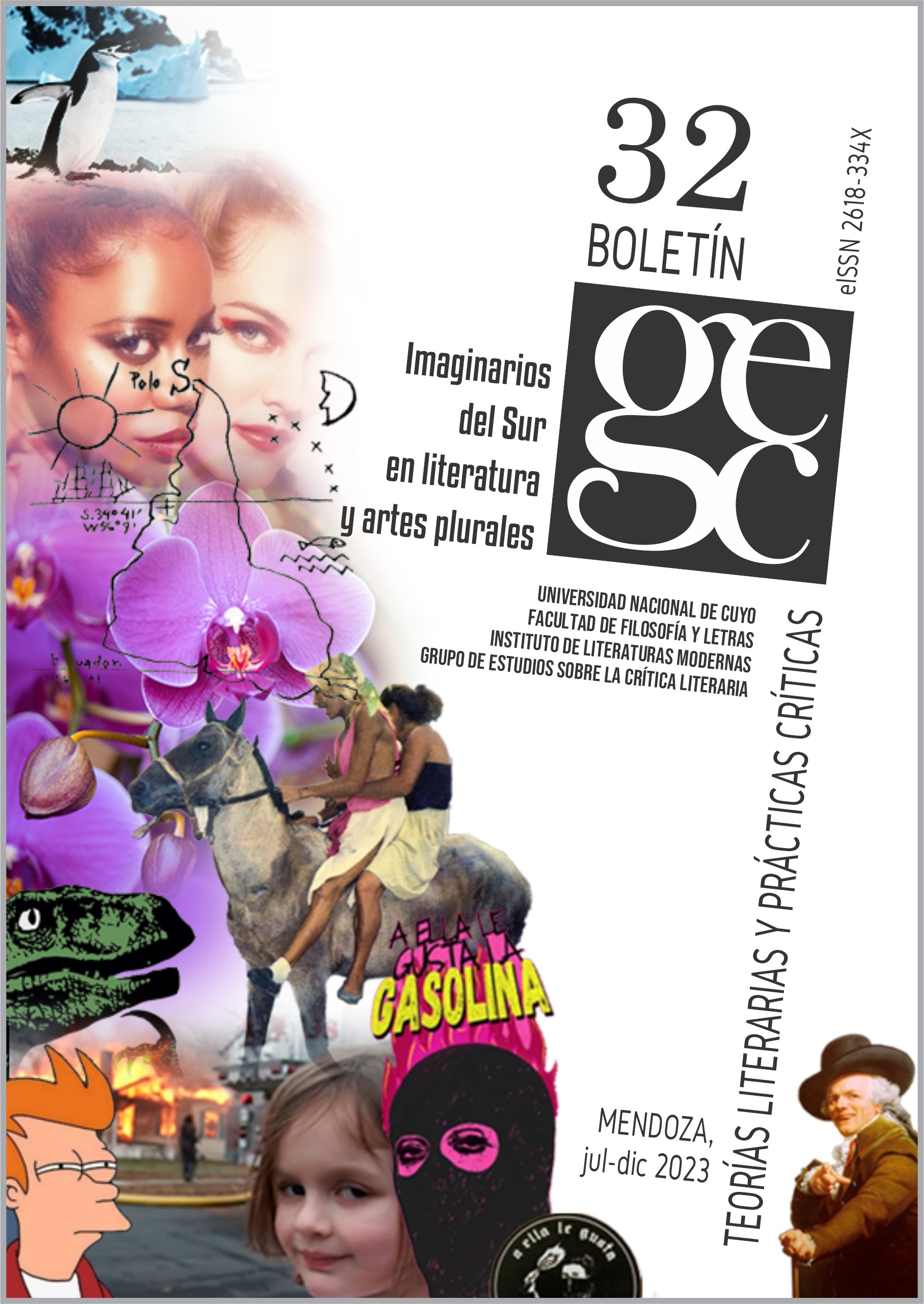Little Red Riding Hood is not a princess. The critical potential in a traditional character
DOI:
https://doi.org/10.48162/rev.43.049Keywords:
children's literature, picture book, feminist narratives, Little Red Riding Hood, rewritingAbstract
This paper aims an interpretation of different rewritings of “Little Riding Red Hood”, in the light of the criticism of fairy tales in Feminist Studies and Children’s Literature Studies. Our inspiring hypothesis is that, since she is not a princess, this character holds a particular potential for rewritings that reject traditional gender representations, which are present however in the popular versions of “Snow White”, “Cinderella” or “Sleeping Beauty”. In order to frame the analysis, we first present the connection between the two fields of studies mentioned above, since the academic interest in Children’s Literature is fostered by the development of the feminist perspective on folk tales. Secondly, we suggest a brief but meaningful corpus of picture books that convey critical rewritings of “Red Riding Hood”. Our conclusion is that this character’s traits make her especially powerful for this kind of literature.
References
Arpes, M. y Ricaud, N. (2008). Literatura infantil argentina. Infancia, política y mercado en la constitución de un género masivo. La Crujía.
Bajour, C. y Carranza, M. (2005). Abrir el juego en la literatura infantil y juvenil. Imaginaria. Revista quincenal de literatura infantil y juvenil, (158), s.p. https://www.imaginaria.com.ar/15/8/abrir-el-juego.htm.
Baker-Sperry, L. y Grauelholz, L. (2003). The pervasiveness and persistence of the feminine beauty ideal in children’s fairy tales. Gender & Society, 15(15), 711-726. https://doi.org/10.1177/0891243203255605
Bettelheim, B. (1994). Psicoanálisis de los cuentos de hadas. Crítica. (Original publicado en 1976).
Bourdieu, P. (1998). La distinción: Criterio y bases sociales del gusto. Taurus.
Dahl, R. (2011). Caperucita Roja y el Lobo. En Cuentos en verso para niños perversos. (pp. 33-36). Alfaguara.
Eriksson, L. (2021). Y por supuesto se conocieron. Representaciones de género y sexualidad en literatura infantil [Tesis de grado, Dalarna University, School of Humanities and Media Studies]. Högskolan Dalarna. Publications. http://urn.kb.se/resolve?urn=urn:nbn:se:du-31690.
Frisch, A. (2013). La niña de rojo. Kalakalandra.
Grimm, J. y Grimm, W. (2017, 5 de abril) Caperucita Roja. Educ.ar. https://www.educ.ar/recursos/131413/caperucita-roja-de-jacob-y-wilhelm-grimm
Haase, D. (Ed.). (2004). Fairy Tales and Feminism: New Approaches. Wayne State University Press.
Hall, S. (2010). Sin garantías: Trayectorias y problemáticas en estudios culturales. Envión Editores.
Hunt, P. (Ed.). (2015). Understanding Children’s Literature: Key essays from the International Companion Encyclopedia of Children’s Literature. Routledge.
Hutcheon, L. (2006). A Theory of Adaptation. Routledge.
Leray, M. (2009). Una caperucita roja. Océano Pacífico.
Mancilla Pinda, F., Bahamonde, S. M. y Pac, A. B. (2021). Estrategias literarias en las reescrituras contemporáneas de los cuentos tradicionales. Informes Científicos Técnicos - UNPA, 13(3), 16-35. https://doi.org/10.22305/ict-unpa.v13.n3.831
Mancilla Pinda, F., Bahamonde, S. y Pac, A. (2021). Estrategias literarias en las reescrituras contemporáneas de los cuentos tradicionales. ICT-UNPA-288-2021, 16-35. https://doi.org/10.22305/ict-unpa.v13.n3.831
Mejía Navarrete, J. (2011). Problemas centrales del análisis de datos cualitativos. Revista Latinoamericana de Metodología de la Investigación Social, 1(1), 47-60. https://relmis.com.ar/ojs3/index.php/relmis/article/view/43/46 .
Moscovici, S. (1979). El psicoanálisis, su imagen y su público. Editorial Huemul.
Paul, L. (2015). From Sex-Role Stereotyping to Subjectivity: Feminist Criticism. En P. Hunt (Ed.), Understanding Children’s Literature. Key essays from the International Companion Encyclopedia of Children’s Literature (pp. 112-123). Routledge.
Pérez Conde, C. (2023). Los cuentos de hadas, de la oralidad al netlore: análisis de Caperucita Roja y de su adaptación al mundo audiovisual. Castilla. Estudios de Literatura, 14, 609-633. https://doi.org/10.24197/cel.14.2023.609-633.
Perrault, Ch. (2017, 5 de abril de) Caperucita Roja. Educ.ar. https://www.educ.ar/recursos/131423/caperucita-roja-de-charles-perrault
Punte, M. J. (2013). El retorno a los bosques encantados: infancia y monstruosidad en ficciones del sur. AISTHESIS, (54), 287-301. https://ojs.uc.cl/index.php/RAIT/article/view/2954/2830
Rowe, K. (1986). Feminism and Fairy Tales. En J. Zipes (Ed.), Don’t bet on the Prince: Contemporary feminist fairy tales in North America and England (pp. 209-266). Gower.
Tatar, M. (1999). The classic fairy tales: Texts, criticism. W. W. Norton & Company, Inc.
Valenzuela, L. (2001). Ventana de hadas. En Peligrosas palabras. Reflexiones de una escritora. Temas Grupo Editorial.
Valero Cuadra, P. (2022). Blancanieves, Cenicienta, Rapunzel, Caperucita…: De crueles cuentos de los hermanos Grimm a películas Disney. En I. Holl y B. de la Fuente Marina (Eds.), La traducción y sus meandros: diversas aproximaciones en el par de lenguas alemán-español (pp. 101-123). Ediciones Universidad de Salamanca. https://doi.org/10.14201/0AQ0320101123
Varela, N. (2008). Feminismo para principiantes. Ediciones B.
Wolf, E. (2001). Pobre lobo. En Filotea y otros cuentos. Alfaguara.
Zipes, J. (2014). El irresistible cuento de hadas. Historia cultural y social de un género. Fondo de Cultura Económica.
Zipes, J. (Ed.). (2012). Don’t bet on the Prince: Contemporary feminist fairy tales in North America and England. Gower. (Original publicado en 1986).
Downloads
Published
How to Cite
Issue
Section
License
Copyright (c) 2023 Ana Gisela Cejas, Andrea Pac

This work is licensed under a Creative Commons Attribution-NonCommercial-NoDerivatives 4.0 International License.
Aquellos autores/as que tengan publicaciones en esta revista, aceptan los términos siguientes:
- Los autores/as conservarán sus derechos de autor y garantizarán a la revista el derecho de primera publicación de su obra, el cual estará simultáneamente sujeto a la Licencia de reconocimiento de Creative Commons que permite a terceros compartir la obra siempre que no se use para fines comerciales, siempre que se indique su autor y su primera publicación en esta revista, y siempre que se mencionen la existencia y las especificaciones de esta licencia de uso.
- Los autores/as podrán adoptar otros acuerdos de licencia no exclusiva de distribución de la versión de la obra publicada (p. ej.: depositarla en un archivo telemático institucional o publicarla en un volumen monográfico) siempre que se indique la publicación inicial en esta revista y se cumplan las otras condiciones mencionadas arriba.
- Se permite y recomienda a los autores/as difundir su obra a través de Internet (p. ej.: en archivos telemáticos institucionales o en su página web) antes y durante el proceso de envío, lo cual puede producir intercambios interesantes y aumentar las citas de la obra publicada. (Véase El efecto del acceso abierto).














